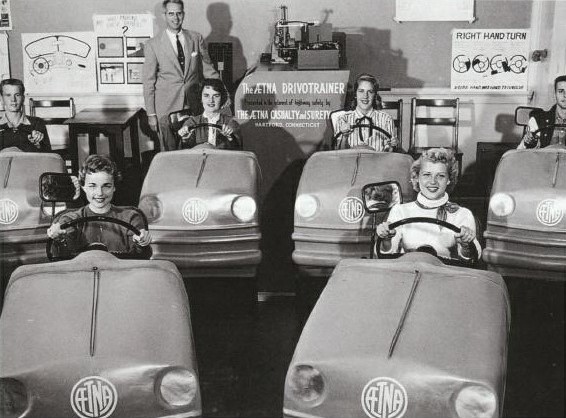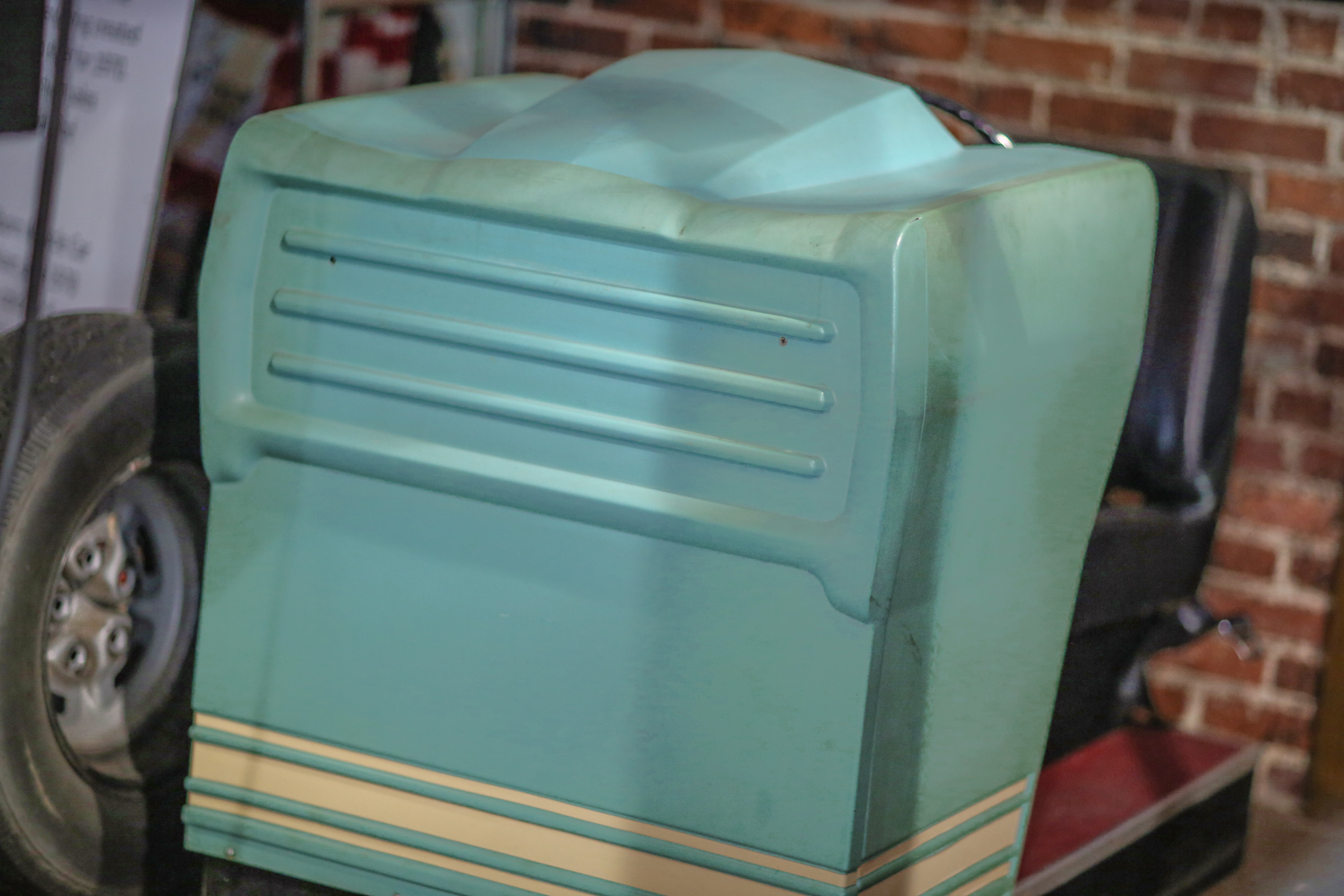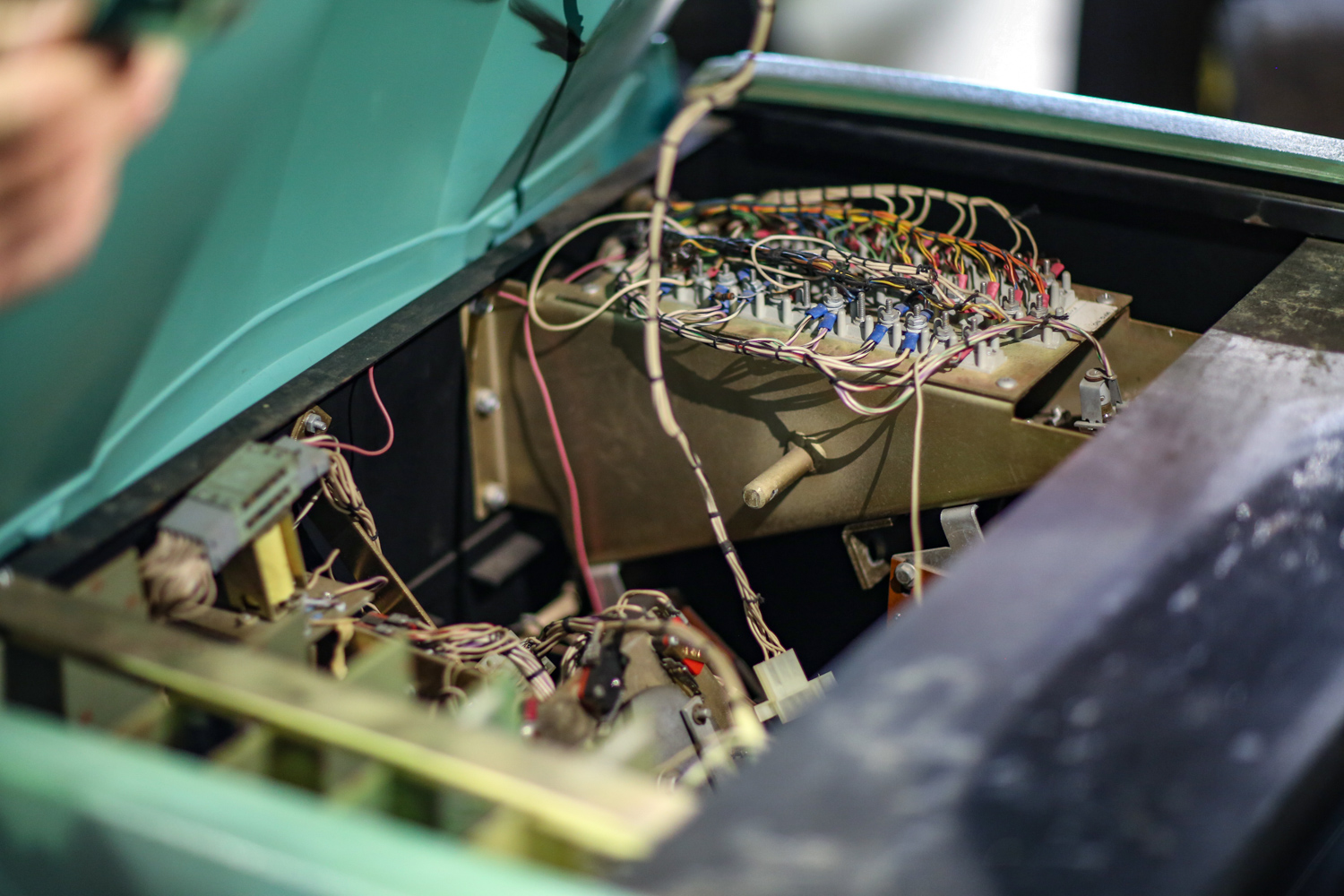The Drivotrainer was the Gran Turismo of the 1950s
Decades before you could drive like a bat out of hell in Gran Turismo without leaving the comfort and safety of your own home, we had the Drivotrainer. The then-cutting-edge classroom simulator taught a generation of high school students how to drive an automobile. It also simultaneously lowered the blood pressure of countless parents and brake-stomping instructors who took their lives into their own hands while riding shotgun in actual city traffic.
As an auto insurer, Aetna Casualty had a vested interest in highway safety and was committed to improving driver education. In 1935, the Connecticut-based company introduced the Reactometer, designed to measure drivers’ reaction time, then improved upon its invention with the Roadometer, which included a short motion picture and graded scorecard.
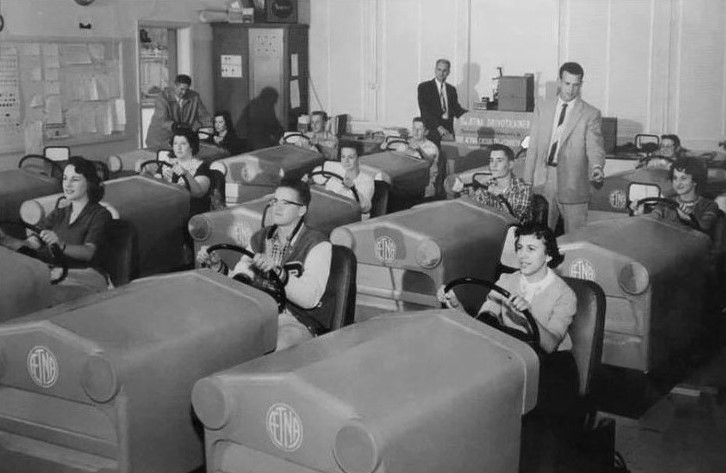
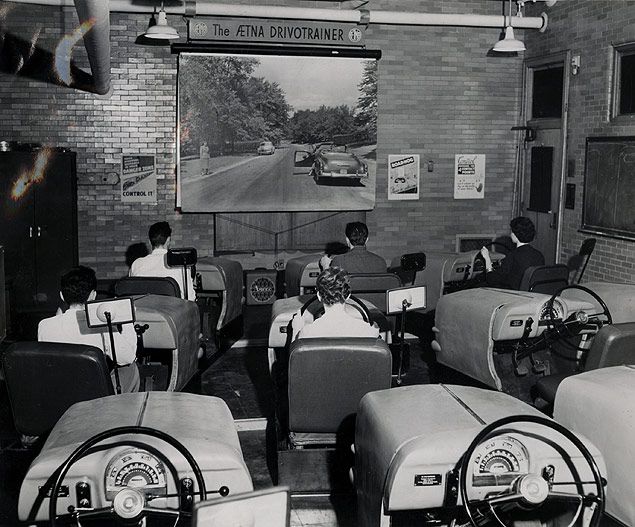
The Drivotrainer, which came along in 1951, combined a simulator with motion pictures, giving students a more accurate behind-the-wheel driving experience. According to the Brooklyn Public Library, the Drivotrainer debuted at the Brooklyn High School for Automotive Trades in 1953, but a ’50s newsreel mentions three original testing sites: William Cullen Bryant High School in Queens, New York; Iowa State Teachers College (now the University of Northern Iowa); and Hollywood High School in Los Angeles.
Among the comical interviews included in the film (below) is this from a smiling, matter-of-fact instructor, who says of the Drivotrainer: “The students like it, the teachers like it, and best of all, it works… Here we believe we are training drivers who will live and let live.”
Drivotrainer classrooms included multiple single-seat Aetnacars equipped with controls similar to those in an actual automobile—from steering wheel and gear shift to clutch, brake, and gas pedals. Engine noise added to the realism, and the volume increased and decreased depending on how much pressure was applied to the accelerator. A training film showing typical driving conditions was projected onto a large screen at the front of the classroom. The Drivotrainer system recorded and scored each student’s inputs compared to the motion picture.
Aetna collaborated with the New York City Department of Education to produce a total of 22 films to use in training, which included a 25-minute final exam. There was even a lesson illustrating how the consumption of alcohol affects reaction time.
As Aetna’s Drivotrainer became more widely accepted in the late 1950s and early ’60s, it was adapted for use in other countries. In Great Britain, the simulators were switched to a right-hand-drive configuration and the student requirements were adjusted. According to the narrator in this newsreel, “After seven 90-minute lessons, the pupil is three-quarters ready to have a driving test on the road, full of confidence, thoroughly familiar with the controls.”
The appearance and overall design of the Aetnacars changed a bit over the years, and mechanical improvements were made periodically, including updates to simulate automatic transmission. Some schools used the Drivotrainer well into the 1970s and beyond.
Most of the simulators are now considered artifacts, like the one at the Wellborn Musclecar Museum in Alexander City, Alabama. That’s right, one resides in a muscle car museum. Maybe those engine sounds came from a Mopar.
